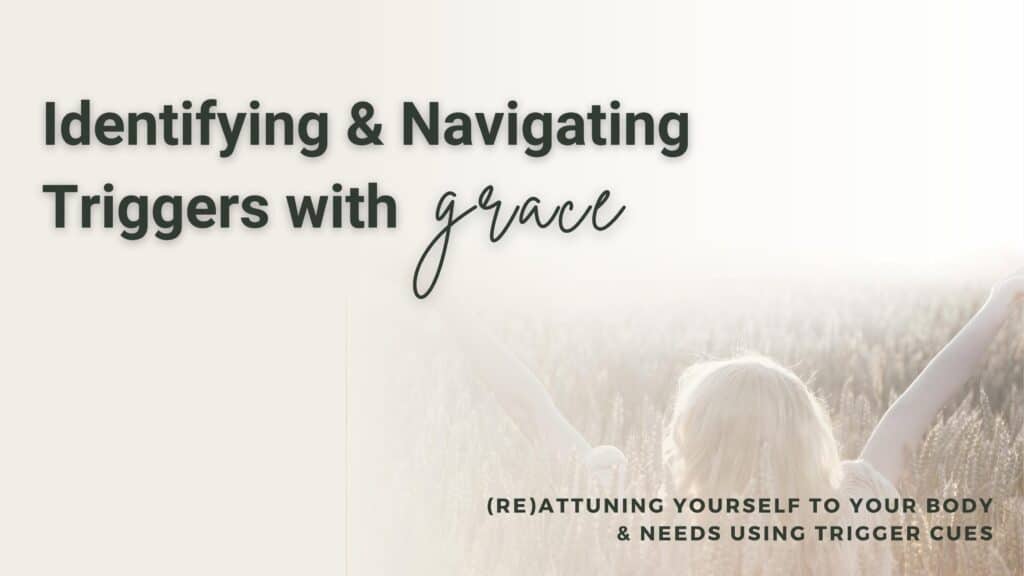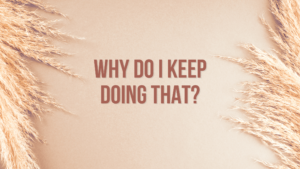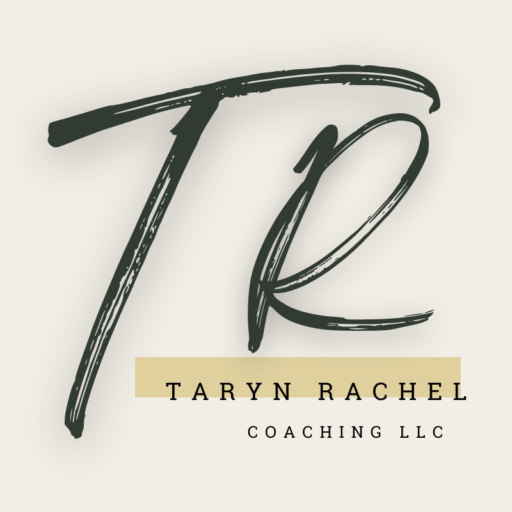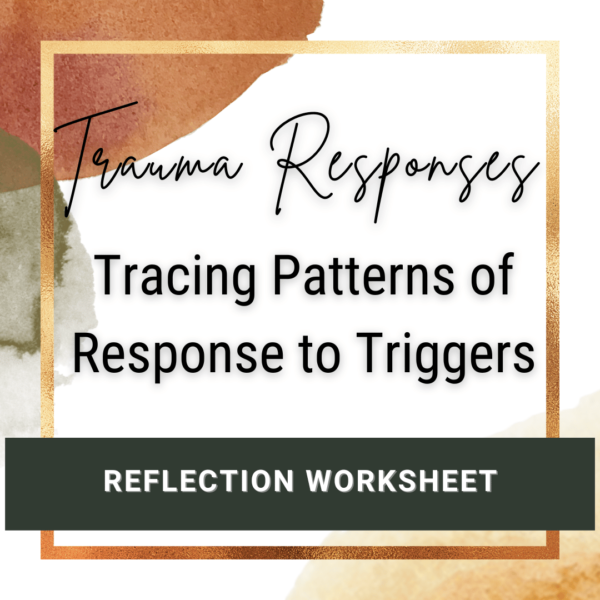
Once you identify your triggers there can be a hyper-awareness phase that follows. In this phase, triggers can feel overwhelming with no easy ways of deescalating them. I have been in this exact situation many times where something from my past resurfaces. In that moment, my body is vibrating with anxiety, my mind unable to think logically and my responses full of heightened sensitivity. You too?
So… is it possible to heal triggers? YES*. The only asterisk next to that “yes” is this. *Yes, if you’re willing to step into discomfort for the purpose of healing.
Remember, a trigger is a heightened sensitive area that is begging to be healed. Triggers like to point out those areas so you’ll pay attention to them!
When a trigger shows up, most people want to ignore it, or rush to find instant relief to ‘fix’ the trigger. That’s not surprising one bit, because sitting with discomfort is HARD. It’s one of the hardest things you’ll do as you pursue healing. However, when you do begin to heal triggers, it will bring you deeper understanding and self-compassion, while also strengthening your relationships. Now, let’s get really practical with how you can start to heal triggers 👇🏽
How to Become Aware of My Triggers Through Thought Tracing & Body Sensations
Consider the formula for navigating a trigger = acknowledgment + feeling + reassurance + realistic, compassionate coping + stating need
S T E P 1 : Let’s curb the need to rush into action. An essential (don’t skip this) step toward moving forward into healing triggers is this: acknowledgment. Acknowledging that triggers exist will set up the rest of your journey through the lens of validation and grace instead of avoidance and “push past” mentality. Although it sounds simple to recognize a trigger, it can become a mind battle quickly. This can sound like saying in your head to yourself: “Okay, I think that was a trigger of mine.”
For additional support for acknowledging triggers through a grace laced lens, check out this resource.
S T E P 2 : This ones a tricky one! But hear this first… You don’t have to know the purpose behind a trigger OR what you’re feeling for it to be valid. It’s still worth acknowledging that something felt ‘off’. If you’re able, take a guess at what you may be feeling when you surprise yourself with a bigger response than the moment called for. Here’s a great place to start: take a look at my fav feeling wheel. If angry or sad is all you can come up with, this offers new labels to try, see what may be a better fit. Expanding your emotional vocabulary can also expand your emotional awareness. Taking a guess at labeling your feeling can sound like, “I think I’m feeling overwhelmed, or maybe embarrassed.” Reminder: You can hold more than one emotion at a time!
S T E P 3 : Here’s a short, but jam-packed phrase to toss in the middle of this formula: “I’m okay.” In the moment of a trigger, everything in your brain and body is saying, “YOU’RE ABSOLUTELY NOT OKAY.” So reminding yourself that you ARE okay and that this isn’t like last time is a go-to phrase you need to keep in your back pocket. Psst… it also holds acknowledgement of the trigger as you cope. Win-win!
S T E P 4 : Choose compassion for self over judgment. When a trigger comes up, the easy button can get loud and tell you, “just ignore what your body is telling you, it shouldn’t be a big deal” OR for you overachievers, it can sound like, “Just try harder, if you do X, and be more X, then this would stop.” You guessed it, neither of these options leads to the result you desire: to navigate a trigger in a way that will bring healing. Instead, choosing compassion in this moment sounds like, “I will do my best right now.”
S T E P 5 : This last piece can leave a lot of people with a big question mark ❓ After a trigger rears its head, what do you need? Often times you won’t know. And guess what? That’s okay. You can take guesses as long as you’re comfortable back tracking. If you realize what you thought you needed isn’t actually helpful, that’s okay. Once you can begin to identify what you need, it can move you from sitting with a trigger toward that action piece you’ve been hoping for!
R E P E A T : After the circumstance, continue to reflect and notice if there’s an area where you wanted to try something else. Envision what that would look like. Then make a plan to do so next time. This is the grace-filled pattern that takes practice. Expect for awareness to take time to build and become friends with the phrase, “This time I learned…, I’ll try again next time”.
Find YOUR short phrase that you can return to when a similar circumstance occurs using this formula.
Navigating a trigger = acknowledgment + feeling + reassurance + realistic, compassionate coping + stating need
Need some examples? 👇🏽
“I’m triggered right now. I’m feeling overwhelmed and not enough. I’m okay. What I bring to this situation right now is enough. I need… and I can voice that.”
“Okay, I think that was a trigger of mine. Wow, that feels X (disappointing, frustrating, shame-filled, crappy, etc). I’m going to be okay and pay attention to that pattern. I need some time to be alone.”
Getting Curious About Your Triggers
Now that you know the key ingredients to navigating a trigger, a first-step into building keen trigger awareness is actually after the fact. Consider the situation where you felt escalated seemingly in an instant. Now, get curious, non-judgmentally. What were some of the circumstances of that moment? Here are some reflection prompts to get your mind rolling:
- how did your body feel in that moment? Where exactly did you experience sensations like tightness, warmth, tingling?
- what was a thought that felt prominent besides ‘I’m mad’ or ‘they’re just stupid’? Think beyond those forefront thoughts to WHERE this sudden eruption could have stemmed from.
- what was your response? Was that common to how you typically would respond in a situation with equal magnitude? If not, what made this situation different?
- consider context: was there a component of your environment (location, type of people in the room, space) that could have contributed? Does this time of year bring anything up for you?
- consider past: What from your past did this situation, tone, experience remind you of? What makes that past event important?
For a deep dive into identifying your triggers, join the three day email mini-series ALL. ABOUT. TRIGGERS. For three days, you can expect to do a mini deep dive into how to identify your triggers AND navigate them in a healthy way. It will include:
Day 1: Identifying your patterns of response to triggers
Day 2: How you can sit with triggers — not stuff them — in a way that fosters healing
Day 3: Your resource for drawing awareness to body and thoughts as you learn to sit with triggers healthily
I won’t ask you if you’re in because you wouldn’t be here if you didn’t want to see a shift in trust. And of course, I’m here for you. As a Communication & Relationship Coach, let me be a resource. Don’t heal alone, we can walk through any piece together! Start a chat with me by clicking the chat bubble in the bottom right hand corner of this screen.
Where to next?
Strengthen Trust
This would propel my relationships toward intimacy.
Practice Communication
This would provide fueled awareness & connection.
Maintain Momentum in Healing
This would give me peace and freedom.
Related Blog Posts
Pain Colors How We Think God Paints
The More Honest You Are With God, The More intimacy you’ll have with him. I share content for those struggling with past hurt so you

“Why do I do that??” (Revealing the Why Behind What You’re Feeling with 1 Question)
The More You Trust Yourself, The Healthier Relationships You’ll Have. Receive easily-applicable strategies to build self-trust so you can experience unshakeable confidence. “Why do I

How to Stop Feeling So Insecure Paranoid After Your Trust Was Broken
The More You Trust Yourself, The Healthier Relationships You’ll Have. Receive easily-applicable strategies to build self-trust so you can experience unshakeable confidence. How to Stop



